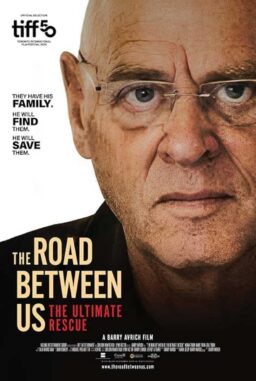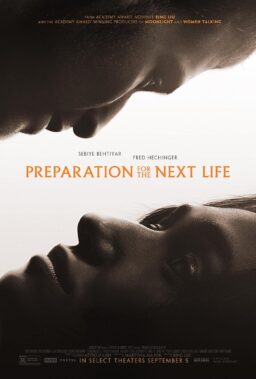Tony- and Emmy-winning actress Tyne Daly has one of her great roles in Patrick Wang’s epic two-part drama “A Bread Factory,” playing one half of a lesbian couple (opposite Elisabeth Henry) that runs an arts center in a small upstate New York town.
The role gives Daly a chance to play a tough, eloquent, inspiring character who goes the extra mile to keep the arts alive both as a physical fact and a political force. The character isn’t too terribly different from the person Daly is in life. She’s constantly toggling between small local and regional theater and movie productions and big film and TV projects (she appeared in the $175 million production “Spider-Man Homecoming” right before doing “A Bread Factory,” the total budget of which wouldn’t cover catering on a Marvel film). Even in casual conversation, Daly never misses the opportunity to recommend reading, viewing or listening material. She exhorts others to go forth and love education and the arts the way most people say, “Have a nice day.”
I was fortunate to visit the set of “A Bread Factory” last year in Hudson, New York. This interview was conducted while Daly was on lunch break, surrounded by friends and colleagues. Their ranks included Daly’s dear friend and costar Brian Murray, who introduced her to the film’s director, and who unfortunately has since died. On the table in front of Daly was a hardbound copy of the text of the Equal Rights Amendment, which she discussed with me, along with the differences between big- and small-budget filmmaking, the advantage of acting for theater, and the difficulty of maintaining health insurance when you’re an actor of a certain age.
To read my review of “A Bread Factory,” click here.— MZS

Why this movie?
“A Bread Factory” is a love letter to the theater in the form of a movie, which I think is wonderful. It’s about true believers in the theater who are being usurped by untrue believers. The untrue believers have invaded. Also, it contains great big hunks of the Greeks, in particular Euripides’ Hecuba. And to commit to that, I think that’s wonderful.
Have you done Ancient Greek theater in the past?
I had a chance to dabble a bit. We did Agamemnon out in LA at the Getty Villa. It was just a wonderful, wonderful experience, and I don’t get to do that part. In “A Bread Factory,” I’m the director of Hecuba, not an actor, so I don’t get to speak the Greek stuff. But the experience of playing outside, under the stars, in front of the Getty Villa with all those treasures in it, was unforgettable. You know, they built an amphitheater to the exact specifications of…I always forget the name, what’s the city where they were all frozen in ash?
Pompeii.
Yeah! Whether that was a smart idea or not, I don’t know. We had the ocean on one side of us and Topanga Canyon on the other, listening to the people come in and playing under the stars. I would watch the stars come out and think, People have been telling each other this story for 2500 years, and the stars have been watching us and saying so little. Humans – you still don’t get it, do you? We keep telling you this story!
So the fact that the women in this movie run a cultural center similar to that, out of a converted bread factory, and introduce children to all sorts of art forms, and show movies and stuff, and the fact that they’re doing Hecuba—all of that just pleased me.
What was this shoot like as an actor? I ask that because a lot of big movies shoot a lot of coverage, and make the actors do every line from a lot of different angles. This director doesn’t work that way. Sometimes a shot will go on for two, three, five minutes without a cut, and that’s the only angle on a scene.
I think Patrick has a very specific idea about what he wants, and he’s very gentle about insisting. He’s a gentle insister! Part of what I really admired about “In the Family” was the time he took and the way he studied human beings at a little bit of a remove. He’s very, very stingy with his close-ups, but I completely trust that he’s making his choices for a reason, even though I don’t always understand them.
How does it feel when you’re acting uninterrupted for a long time during a long take?
Challenging, because my memory’s not as good as it was 10 minutes ago. Certainly it’s a lot harder to con.
Con? How so?
When you’re working very very fast in TV, you have the opportunity to con, if they start out with the master shot.
For readers unfamiliar with film grammar, that’s the wide shot that shows all the pertinent characters together in their environment, so you know where they are in relation to each other.
That’s correct. You have the master, the two-shot, and the close-ups, usually in that order, and if you want to con a little, sometimes you can get your performance into shape as they’re working their way through all the shots, so that by that time they get to your closeup, you know your words.
But the way Patrick works is something different, because he doesn’t cut, so it gets a little scarier. You have to do big hunks of the scene. He has 15 ten-page scenes. Usually you’re shooting in much smaller increments.
Is that how it usually works in movies that you’ve done?
Yes. The last film I did was “Spider-Man Homecoming,” and I was sworn to secrecy because it’s a [air quotes] “big deal.” We went on these enormous sets with nothing on them, maybe a little element over here or there, but the rest was going to be drawn in later. It was the kind of work where I felt very much like a piece of machinery, you know? It was not very satisfying in terms of what I know about acting, what acting’s supposed to be.
And there’s this lovely kid, Tom Holland, in his full-body condom that he couldn’t pee in all day, terrified! He’s there with some fans – that poor kid! God, I was terrified for him! I didn’t actually see what he looked like until the wrap party because it always took him hours to get into the suit, hours to get out, and he didn’t even have a catheter! I thought it was child abuse! [Laughs]
But that’s the state of the art in terms of great big cartoon movies. It’s less about us.
So a film like this is my antidote. They pay you no money at all. They pay you lovely money to do Spider-Man. But this is about characters and situations that are deeply human and not at all cartoon-y.
Have you given up on movies as an art form?
No! I’m here, ain’t I? [Laughs] But I will say that a lot of American films being made today are not made for actors.
And beyond that, being in a film, any film, is like being frozen in time. I like being on the stage better. I worked with David Lindsay-Abbaire on Rabbit Hole, I did a brand new musical two seasons ago, It Shoulda Been You. It wasn’t all new plays, unfortunately, because Broadway is afraid of new plays. It’s what the traffic will allow, always, but I managed to play a season. I did Mothers and Sons, by Terrence McNally. It’s been rich for me in New York without television, except…well…I shouldn’t tell you this…
Don’t make me stop you!
My insurance was cancelled from [Screen Actors Guild] because I hadn’t earned enough dough, and so I had to call up Sharon [Gless] and say, “Sharon, put me on your show!” She was doing whatever that thing was on USA, “Burn Notice”. She got me on it so I could make my medical.
How has TV changed since you were doing “Cagney and Lacey”?
TV has changed a great deal since then. It’s changed a great deal just in the last decade. We worried fifteen or twenty years ago that scripted TV was over because of reality shows, which have gone on far too long. But now they’re declaring a new golden age in scripted stuff. My kid brother – my kid brother? [Laughs] He’s 61! – he’s over on CBS doing “Madame Secretary”. The speed at which they do stuff now, the having 11 or 12 people who are all part of a repertory group, it’s not like what we were doing between ’82 and ’89. It’s just a different rhythm.
Do you watch much TV these days?
Do I watch much TV? I didn’t own a TV set for a decade, until this year, and I bought it this year to watch the ever-evolving American experiment. And now I’m sorry I did. [Laughter] You may quote me. It’s this big, my TV [makes shape with hands roughly the size of a toaster oven]. It stands on a little thing in my apartment in New York, and I have one over at the house I’m staying in here, but I haven’t put it on yet.
Why not?
I don’t believe in having large bowls of shit in the morning, afternoon, or evening as a source of nourishment. [Laughter] Thank you for laughing at that, Matt.
That’s great!
Never mess with an old woman who’s got nothing left to lose!
Where in New York do you live?
I moved to East 54th Street. There’s a river over there. I used to have a place on West End Avenue, but that went the way of all flesh in the divorce [from director Georg Stanford Brown], and so when I came back to New York, which will have been 11 or 12 years now come October, I thought if I ever went back to the old neighborhood, it would not be starting again, so I picked a place where I hadn’t lived before. I like it a lot over there.
Why do you have a copy of the Equal Rights Amendment with you?
I believe it’s time to have language about our daughters and ourselves in the Constitution of the United States. The ERA is possibly going to be reintroduced by the smart women that I know. Having been slapped once again in the face by our nation and dismissed as second-class citizens, I think we have to get active again and get it into the Constitution.
How do you like your chances?
Do you read poetry?
Sometimes, yeah.
There’s a line I really like by Hafiz, a 14th century poet and mystic writer: “Love kicks the ass of time and space.”
That’s nice.
If I could make a living reading poetry, it’d be a happy living, but that’s a tough dollar. I just gave Patrick a poem called “Cutting Up an Ox,” which is a Chinese poem written 300 years before Christ. We have a lot of fun around here.













